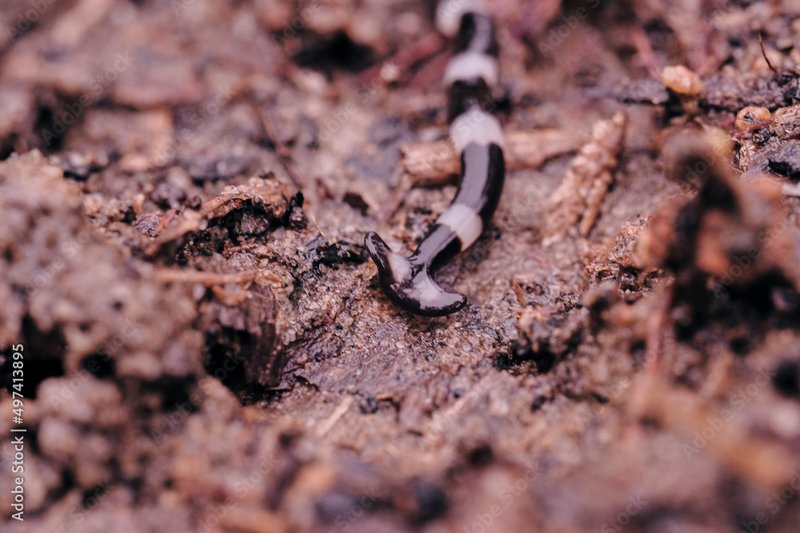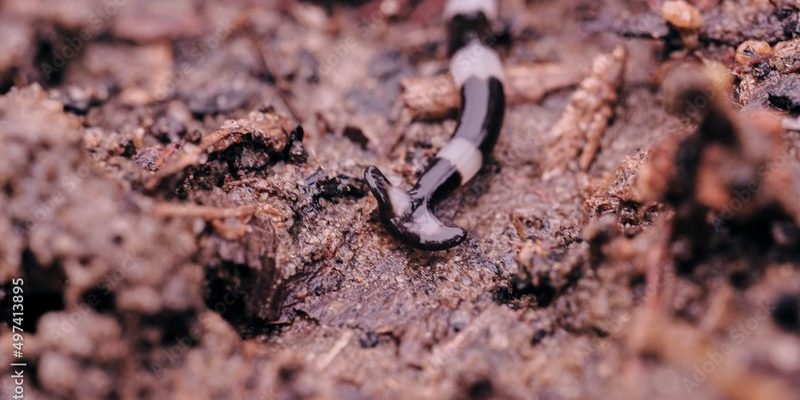
Let’s break it down over a cup of coffee. Imagine your garden soil as a bustling city filled with all sorts of tiny workers—these are the nematodes. They help keep the soil healthy and nourished. But suddenly, the hammerhead worms move in, and things start to change. In this article, we’ll explore how these flat-headed invaders affect the hardworking nematodes, the ecosystem, and ultimately, your garden’s health. So, grab your favorite mug, and let’s dive in!
What Are Hammerhead Worms?
If you’re scratching your head and thinking, “What’s a hammerhead worm?” you’re not alone. These flatworms belong to the genus Bipalium and are known for their distinctive hammer-like head. They’re often found in tropical and subtropical regions, but they’ve been making their way into other areas, too.
Hammerhead worms can grow anywhere from a few inches to more than a foot long. They are typically brown or gray, with a smooth body that allows them to glide through the soil like a well-oiled machine. They aren’t just interesting to look at; they also have a fascinating hunting method. These worms prey on various soil organisms, including insects and, yes, nematodes.
Why should you care about hammerhead worms? Because their presence can significantly change the dynamics of the soil ecosystem. By preying on nematodes, which play crucial roles in soil health, these worms can impact everything from plant growth to nutrient cycles.
What Are Soil Nematodes?
Now that we know a bit about hammerhead worms, let’s talk about their main target: soil nematodes. These little guys are microscopic roundworms that inhabit soil and aquatic environments. They may be small, but their impact is anything but tiny.
Soil nematodes can be divided into three main types: plant-parasitic nematodes, free-living nematodes, and predatory nematodes. Each group plays a unique role in the ecosystem:
- Plant-parasitic nematodes: These nematodes feed on plant roots, which can lead to poor growth and crop yield.
- Free-living nematodes: As the name suggests, these nematodes roam freely in the soil, helping to decompose organic matter and recycle nutrients.
- Predatory nematodes: These are the good guys that eat other harmful nematodes, pathogens, and pests, helping to maintain balance.
You might be wondering why these little creatures matter. Well, they help break down organic matter, keep soil healthy, and contribute to nutrient cycling. Healthy soils support robust plant growth, which is essential for agriculture and gardening. So, if hammerhead worms start to munch on these nematodes, it could spell trouble for your garden.
The Predatory Nature of Hammerhead Worms
Hammerhead worms are predators in the soil ecosystem, and their favorite snack? You guessed it—soil nematodes. They use a unique hunting technique: they secrete a powerful digestive enzyme to immobilize their prey. This way, they can feast on nematodes and other small organisms without needing sharp teeth.
This predatory behavior raises some serious concerns. When hammerhead worms invade, they can drastically reduce the nematode population. Imagine a hungry wolf in a sheep pen; that’s what these worms do to nematodes in your garden. While some nematodes may bounce back, others might not survive such a predation pressure.
In a nutshell, hammerhead worms are like a double-edged sword. They can help control certain pests, but they also threaten the very beneficial nematodes that support healthy soil.
Effects on Soil Health
The impact of hammerhead worms on soil nematodes also links back to overall soil health. When these worms reduce nematode populations, the ground can begin to lose its balance. Think of it like a finely-tuned machine; remove a few crucial parts, and it might not work as efficiently anymore.
Here are a few ways that hammerhead worms can affect soil health:
- Reduced Nutrient Cycling: Nematodes help break down nutrients in the soil. With fewer nematodes, nutrients may not be readily available to plants.
- Increased Soil Pathogens: Some soil pathogens thrive when natural predators are absent. Fewer nematodes mean that harmful organisms can spread more easily.
- Imbalanced Food Web: The balance of predator and prey is essential to healthy ecosystems. When one group—like nematodes—is diminished, other species may flourish, leading to unpredictable shifts in the ecosystem.
Hammerhead worms might seem small, but their impact on soil health can be significant. Healthy soil isn’t just about the worms; it’s about everything working together as a unit.
How Hammerhead Worms Spread
You might be curious about how hammerhead worms even end up in your garden in the first place. These pests are quite resilient and can thrive in various environments. Often, they hitch a ride on garden plants or soil brought in from other places.
So, if you’ve recently added new soil or plants, there’s a chance you could be introducing hammerhead worms into your garden. They reproduce quickly, too, which means a few worms can turn into a larger problem very fast.
To combat this, consider the following prevention strategies:
- Inspect New Plants: Before planting, check for any signs of hammerhead worms. Look for their unique shape and flattenedd body.
- Use Sterilized Soil: If you’re bringing in soil or compost, make sure it’s been properly sterilized to kill any unwanted pests.
- Practice Good Garden Hygiene: Remove any decaying organic matter where hammerhead worms may thrive. This helps limit their food source.
Staying vigilant can help prevent hammerhead worms from making themselves at home in your soil.
Managing Hammerhead Worms in Your Garden
If hammerhead worms have already found a way into your garden, don’t panic! There are ways to manage their presence. Here’s what you can do:
- Manual Removal: When you spot hammerhead worms, use gloves to pick them up and place them in a sealed bag for disposal.
- Encourage Beneficial Nematodes: Introduce beneficial nematodes in your garden. These can help compete against harmful nematodes and pests.
- Avoid Excess Watering: Overwatering can create a damp environment that attracts hammerhead worms. Keep your soil moist but not soggy.
Managing hammerhead worms might not be easy, but with the right strategies, you can minimize their impact on your garden.
The Bottom Line: Balance is Key
In the grand scheme of soil ecosystems, everything is connected. Hammerhead worms and soil nematodes might seem like a small part of the picture, but their interactions can have ripple effects. Keeping your soil healthy and balanced is crucial for enjoying a flourishing garden.
Remember that while hammerhead worms have a predatory nature, they are also a part of the wider ecosystem. If you can manage their impact effectively, you can protect the important nematodes that contribute to soil health. Whether you’re growing vegetables or beautiful flowers, maintaining that balance will help you cultivate a thriving garden for years to come.
So the next time you spot a hammerhead worm, take a moment to think about the bigger picture. What you’re looking at is a sign of the complex and fascinating interactions within your soil. Stay informed, take action, and keep that garden flourishing!

